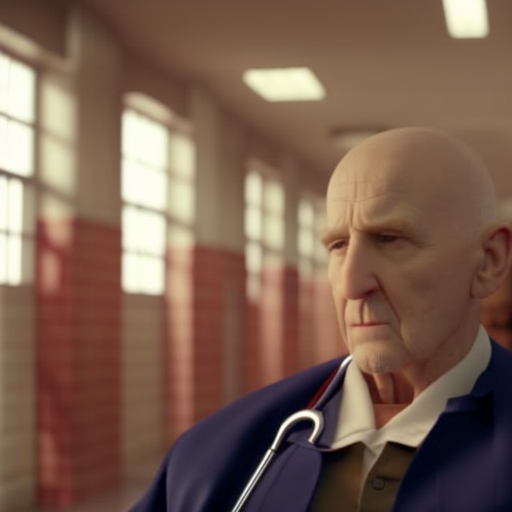
America’s prison system is turning into a de facto nursing home
In late 2018, Richard Washington sent a memo to the US Court of Appeals for the Ninth Circuit with the subject line “Notice I am being killed.”
The 64-year-old man, who decades earlier was convicted on armed robbery charges, was serving a 63-year prison sentence in Arizona. In his letter, he alleged that the Department of Corrections was refusing to give him medication for his various health issues, which included diabetes, hypertension, and hepatitis C. Because of the lack of treatment, Washington wrote, “My greatest fear is that I’m going to die more sooner than later.”
About six weeks later, he was dead.
The Aging Prison Population and Its Impact on Healthcare
In state after state, prison systems have long been plagued by inadequate health care, resulting in the spread of treatable diseases and, in many cases, preventable deaths behind bars. But a key demographic trend threatens to make that problem even worse: Over the last several decades, America’s prison population has been rapidly aging, and, as in Washington’s case, prisoners’ health needs have become more significant as a result.
People who were 55 years old or older made up about 3 percent of the US prison population in 1991; by 2021, they accounted for 15 percent. The total number of older prisoners is also steadily growing, with no signs of abatement: In 2020, there were about 166,000 incarcerated people aged 55 years or older; that number grew to about 178,000 in 2021 and 186,000 in 2022.
The graying of America’s incarcerated population is effectively turning the US prison system into a de facto nursing home, leaving hundreds of thousands of older people in its care each year. The result is skyrocketing costs: The Bureau of Prisons’ health care spending on federal inmates rose from $978 million in 2009 to $1.34 billion in 2016, and various state governments have seen similar increases.
Still, conditions in American prisons continue to be detrimental to people’s health and often lead to accelerated aging. Prisoners, for example, are much more likely to exhibit signs of cognitive decline, including dementia, at an earlier age than the general population, and one study found that a 59-year-old in prison has the same morbidity rate — that is, how often people get a disease — as a nonincarcerated 75-year-old.
The Arrest and Imprisonment of Older People
One of the explanations for the aging prison population is simple: Since the 1970s and the age of mass incarceration — when the American prison population ballooned and gave the United States the distinction of imprisoning more people than any other country in the world — people have been aging behind bars.
The other explanation, however, is less obvious: Older people have been getting arrested at higher rates than they used to. In 1991, for example, people who were 55 years of age or older made up only 2 percent of adults who were arrested; by 2021, they made up 8 percent, according to the Prison Policy Initiative, a Massachusetts-based nonprofit that does criminal justice research and advocacy. The Marshall Project also found a similar pattern: Between 2000 and 2020, there was nearly a 30 percent increase in the number of arrests of people over 65, despite the overall number of arrests dropping by nearly 40 percent.
That spike is especially surprising because people tend to age out of crime: Recidivism rates for older people are significantly lower than they are for younger people. According to vox.com

Join us, as fellow seekers of change, on a transformative journey at https://sdgtalks.ai/welcome, where you can become a member and actively contribute to shaping a brighter future.






